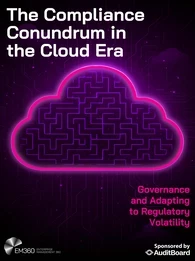
This article was contributed by Simon Kirkup, Solutions Lead at SoftwareONE
Companies are facing a sliding scale of uncertainty for at least the next six months, as moving into high or very high lockdown restrictions is a constant possibility. IT teams must be able to adapt quickly to whatever is thrown their way so they can provide what the business needs. This will require efficiency and flexibility, so it is crucial that businesses prioritise putting the necessary governance, IT and processes in place to facilitate agility.
A recent survey from Gartner showed just 12 percent of organisations said they were highly prepared for COVID-19 back in March. Businesses can’t afford to have the same level of unpreparedness now. Companies must learn from the impact that lockdowns have had on their operations, using this information to improve their response to future upheaval. For example, are there mechanisms in place to scale up licenses for cloud-based software to meet staff demand when the country or certain regions go into a second lockdown, or scaled down if and when employees begin returning to offices? Do staff have the devices they need to immediately begin work remotely if needed and are these secured? Is company data stored, backed-up and protected? Is the business prepared for a software audit and safe from risk of financial penalty?
By considering three key areas, businesses can put a plan in place to handle whatever the next few months bring.
- Moving towards a flexible licensing model
It is uncertain when, if ever, office life will resume but what is apparent is that the hybrid workforce is here to stay. Siemens has decided to let its employees work from wherever they want for two or three days a week, and a recent survey showed half of the workforce will be working in this way, opting for a mix between an office and home working environment. Businesses must adapt by ensuring they put in place equally flexible licensing contracts, for software split between off and on-premise.
Many organisations are locked into costly traditional annual licensing contracts for a set number of licenses per year. This can not only be a huge drain of resource, but also leaves no leeway to scale up or down as circumstances change. Should there be a second national lockdown, or even as regional measures are brought in, organisations must be prepared to enable remote working instantly. Some providers offer more flexible licensing solutions that are worth considering. Flexibility will help companies adapt to the uncertainty they now face and avoid making large one-off payments for on-premise software that may only be in use for three or four months a year.
- Putting the necessary remote access solutions in place
As businesses may need to switch between operating remotely and onsite working more frequently, IT teams need to ensure they have the remote access solutions in place to facilitate this. For example, is a VPN set up for staff to access documents from the company server? Are organisations aware of features available to them through software suites they already have that can be useful? Remote desktop access tools are often overlooked but can enable employees can connect to a remote PC or virtual apps and desktops made available by their admin. This is especially helpful for employees going between home and office working and, for example, have certain documents only saved in either location.
Companies have the time and experience on their side now that they didn’t have at the start of the pandemic. This can be used to their advantage by revisiting company policies and putting processes in place when using different applications or devices outside of the company network.
- Back-up safety
Back-up and recovery is another area for companies to focus on as the shift to remote work has exposed a number of challenges. A dispersed workforce means less centralised data, with some residing on-premise and some in the cloud; this is exacerbated as the lines permanently blur between home and the office, so storing and backing up company data is even more important.
IT teams can create data plans across all data types, no matter where it is accessed from or if it’s stored on-premise or in the cloud. This should include audit trails on who created a copy, where it was accessed and for how long, to offer companies complete control and tracking capabilities. While before organisations may have had methods for preventing data loss due to human error, system malfunctions or cybercrime, they now also have experience in protecting information during a pandemic. They should use this to their advantage to ensure one of their key business assets – data – is recoverable in case of emergency.
Regardless of how prepared companies were pre-pandemic, everyone is now faced with the same task – navigating business in uncertain times. Building a flexible and scalable workplace will be crucial for organisations to not only survive the pandemic, but can also provide a solid foundation for businesses to weather any future unforeseen crises.














Comments ( 0 )